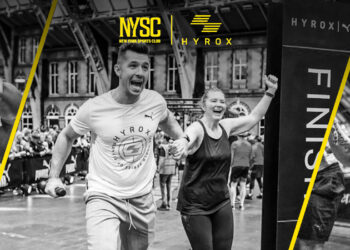Awareness in the importance of physical activity and recovery has risen greatly in the last two years. For fitness professionals, the primary focus on sets and reps has expanded to lifestyle-based fitness programs. Current statistics from the CDC support a comprehensive approach because only 23% of U.S. adults are meeting the minimum physical activity guidelines. And according to the American Psychological Association, 72% of Americans are experiencing stress-related health issues. These include feeling overwhelmed, changes in sleeping habits and constant worry.
Fitness professionals understand the positive side effects of consistent exercise. Things such as decreased blood pressure, improved glucose sensitivity, an increase in muscle mass and numerous other benefits. If fitness professionals truly want to succeed, they need to understand how exercise affects mental health and the necessity of proper recovery.
Today, more people living in a constant state of stress. With 27% reporting they cannot normally function day to day, it’s imperative to be able to transition clients from a sympathetic state of fight-or-flight into a parasympathetic state of rest, digestion and healing. Layering on the external stress of exercise without accounting for internal stressors caused by work, family and daily obligations is a recipe for disaster. Using recovery and relaxation techniques to decrease internal stress will help people avoid stress-overload. It will also help them become more equipped to handle stress and create meaningful changes to energy levels outside of the gym.
Physical Activity
Several studies show moving your body helps with depression, anxiety and ADHD. Exercise releases feel good chemicals in the brain called endorphins that improve mood and feelings of self-confidence. More commonly known as the runner’s high, the feeling of euphoria can be accomplished by cyclical, aerobic-based movements. These include walking, running, rowing or cycling.
Recently, strength training has been shown to improve anxiety and depression due to feelings of mastery over movements and reduced feelings of helplessness and hopelessness. Using loads of 50-60% of a one repetition maximum — eight to 15 reps — has been shown to decrease symptoms of anxiety more so than using loads of greater than 80%. (O’Connor, Herring and Caravalho 2010).
There is a lot of truth to the statement “physical competence lends itself to emotional confidence.” Moving your body daily also enhances sleep quality. The more you move each week, the better you’ll sleep. Your body will recover and be more prepared to take on both internal and external stress.
But to create a sustainable, long-term plan, it’s imperative to utilize training styles the client enjoys so he/she can reach their goals.
Recovery
When thinking about recovery, sleep and rest are commonly referenced. In reality, recovery should be more active than passive. Light movement focusing on increased ranges of motion with little to no load paired with low intensity cardio will reduce delayed onset muscle soreness (DOMs) and central nervous system fatigue from hard training sessions.
Breathing practices that focus on total relaxation by way of deep, diaphragmatic breathing techniques also have a large impact on mental health. Similar to yoga and meditation, breathing practices allow you to think more clearly and reduce feelings of anxiety. This in turn helps alleviate feelings of depression and overall stress.
More passive tools like massage guns, vibrating foam rollers, and massage chairs all promote the shift from sympathetic to a more parasympathetic state of the central nervous system. This is important for resting, digesting and healing. Providing access to both recovery tools and programming for clients will allow them to see better results during their cardiovascular and strength workouts. As well as feel an increased sense of resiliency to stress outside of the gym.
While recovery tools are important, programming is key when thinking holistically about mental and physical health. Instead of traditional ground and pound classes that leave members feeling exhausted, include mind-body options that help reduce mental stress and worry outside the gym. Yoga, meditation and even deep stretching can all have a calming effect and place clients’ minds at ease.
Members of your facilities who only use one or two areas of the gym will benefit from including more variety in their workouts. This should include cardiovascular training, strength training and recovery techniques. More importantly, providing the space for added recovery tools and techniques will help them better utilize your facility. This will also increase the assumed value of their membership. These will lead to better overall confidence, improved mood, decreased anxiety, and enhanced self-efficacy. This, in addition to the usual physiological benefits associated with exercise and recovery will promote more lifestyle-based fitness.
Photo courtesy of VASA Fitness.










